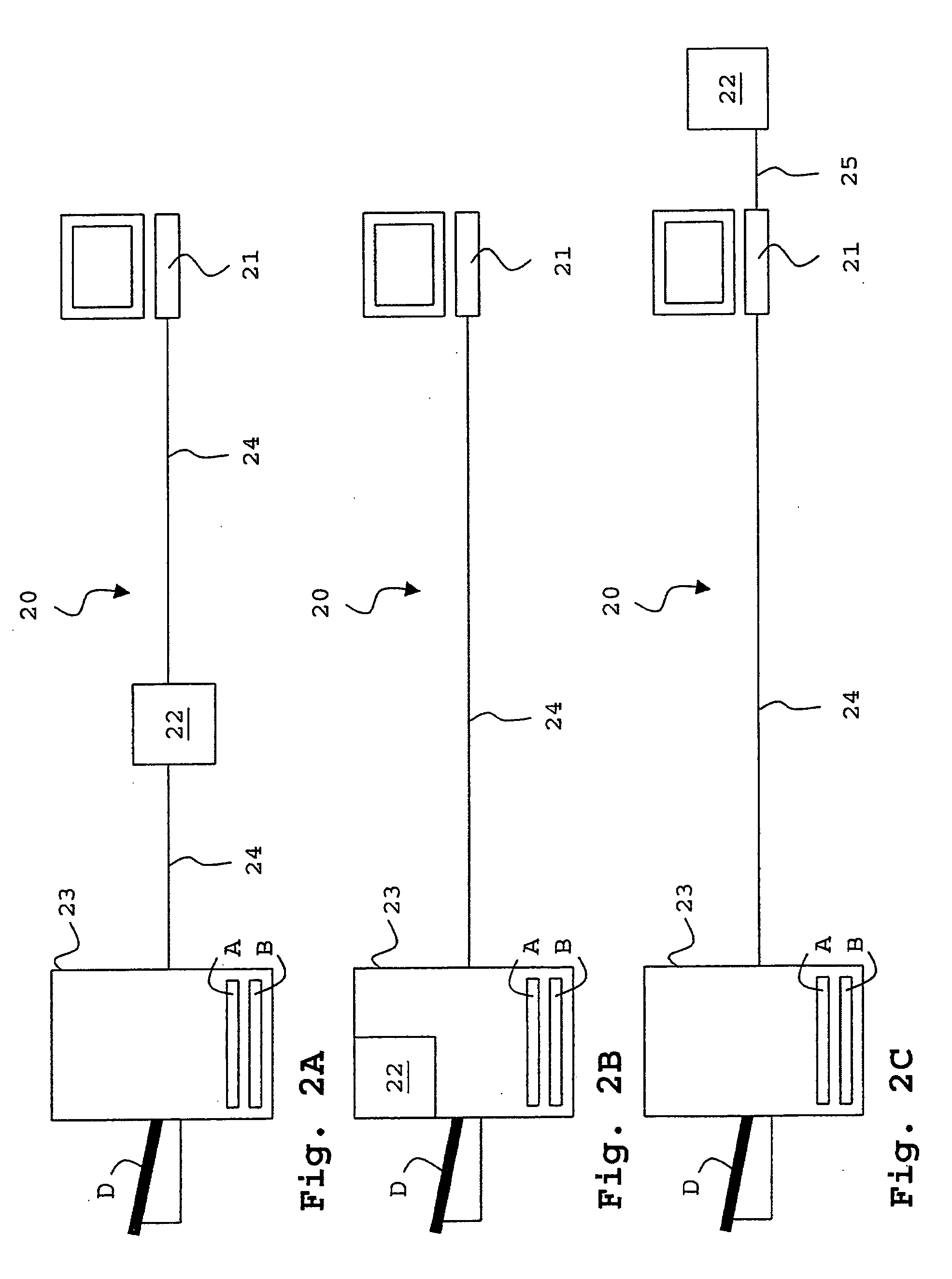Method and system for printing a document
a document printing and document technology, applied in the field of printing a document, can solve the problems of human errors that occur frequently during the restacking of documents, errors may occur during the printing of documents, and the document collation is not easy to follow, so as to achieve the effect of easy indication
- Summary
- Abstract
- Description
- Claims
- Application Information
AI Technical Summary
Benefits of technology
Problems solved by technology
Method used
Image
Examples
Embodiment Construction
[0028]FIG. 1 shows an arrangement of a mail collation device 1, comprising an enveloping machine 2 with envelopes 3. Documents D, comprising various sets of sheets, are presented at a feeding station 5 on a conveyor belt 6. At least one mark e.g. any one or more of marks M1, M2 (see FIGS. 4A and 4B), M3 (see FIGS. 6A-6C) present on a sheet of a document D is read, e.g. a process which is frequently referred to as OMR (optical mark recognition), by a reading station 7 for verifying whether the documents D have been correctly collated before the document is enveloped and transported onwards to a folding station 8. Appendices may be added via an appendix station 9. In the machine 2, every document D, possibly provided with an appendix, is supplied to an open envelope 3 ready to receive the document. An example of such an arrangement 1 is the system SI92 of Neopost. Also other, smaller-scale enveloping systems are known, such as Neopost's SI72.
[0029] An aspect of the invention relates ...
PUM
 Login to View More
Login to View More Abstract
Description
Claims
Application Information
 Login to View More
Login to View More - R&D
- Intellectual Property
- Life Sciences
- Materials
- Tech Scout
- Unparalleled Data Quality
- Higher Quality Content
- 60% Fewer Hallucinations
Browse by: Latest US Patents, China's latest patents, Technical Efficacy Thesaurus, Application Domain, Technology Topic, Popular Technical Reports.
© 2025 PatSnap. All rights reserved.Legal|Privacy policy|Modern Slavery Act Transparency Statement|Sitemap|About US| Contact US: help@patsnap.com



